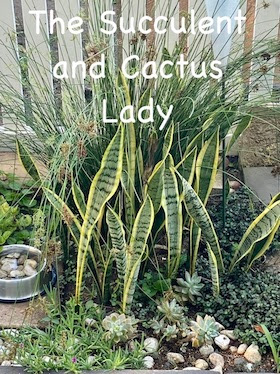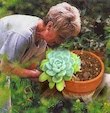At the end of January 2015, I had ordered 25 plants from an on-line auction on FaceBook, and this Pleiospilos compactus was amongst them.
How great was my excitement when I at last noticed that it was starting to flower in the last week of March!
It's been overcast and raining a lot the past couple of weeks, so the flowers stayed closed, but yesterday was pure sunshine and the Pleiospilos compactus flowers opened at last! It certainly was worth the wait!
Pleiospilos compactus (subsp. canus) is a genus of succulent flowering plants of the Aizoaceae family, native to the Cape Province of South Africa. This species have two or four opposite, very fleshy, grey-green leaves growing from a short stem that may be underground and they reproduce both sexually and asexually. Vegetative offshoots emerge from the root system. Seed set occurs in early spring around March.
It is a very adaptable plant, it will grow whenever it has water and good sunlight, but it will become dormant in very hot weather to conserve water. It need full sun to light shade with a very open compost that drains quickly. The container should be at least 10 cm deep to accommodate the long tap root, so I will be transplanting this one shortly to accommodate new growth. Very little water is needed during the growing season.
In late summer to early fall before night-time temperatures fall, watering of the plants is stepped up to once a week. When the night-time temperatures drop to 9°C, watering is restricted throughout the winter months. In the winter, it grows new leaves from the centre of the split, and the new leaves then consume the old leaves. If the plant is over watered, the old leaves remain and the plant usually rots and dies. Do not water it when it is splitting, just leave it alone.
Even with no watering the leaves don't shrink and prune up like some succulents do when they are not watered, they stay plump even after several months with no water. For an idea of how succulent these plants are, a mature specimen can easily go a whole year without any water. If the plants are grown correctly, ideally there should only ever be 2 pairs of leaves. The lower ones are the previous year's, and the top ones, the current year's. One sign of good care is a firm, round, symmetrical plant with no old leaves still attached at the end of summer.
I am thrilled to know that he plants are hardy down to -5°C, as our winters can sometimes deliver some severe frost.
.









